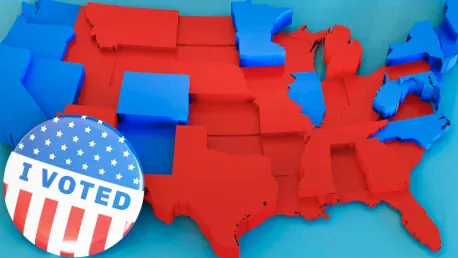Several Republican-controlled states are taking significant steps to reduce the size and cost of their state governments, closely mirroring President Donald Trump’s federal government downsizing initiative through the Department of Government Efficiency (DOGE), spearheaded by Elon Musk. These state-level efforts aim to identify and implement substantial budget cuts, enhancing government operational efficiency. The trend reflects a broader ideological commitment among conservative leaders to make governments leaner and more fiscally prudent, thereby respecting the guiding principle of limited government.
GOP-Led States Launch Efficiency Task Forces
Inspired by the federal DOGE initiative, GOP-led states have formed their own government efficiency task forces and committees to streamline operations and cut unnecessary expenditures. These encompassing measures are driven by a shared conservative value to reduce government size, cut expenditure, and eliminate bureaucratic inefficiencies. Texas, for instance, has established a 13-member Delivery of Government Efficiency (DOGE) committee to evaluate state agency inefficiencies and identify cost-saving opportunities. Other states such as Kansas, Missouri, New Hampshire, North Carolina, Oklahoma, and Wisconsin have taken similar steps, forming bodies aimed at achieving comparable goals.
Despite the eagerness to create these efficiency panels, Democrats have voiced concerns about potential redundancy and questioned the necessity of forming new committees when many states already have established watchdogs and efficiency panels. These critics argue that leveraging existing frameworks could achieve intended goals more effectively without additional bureaucratic layers. Moreover, several blue states have also undertaken significant initiatives to streamline their governmental operations, demonstrating that the pursuit of efficiency transcends political lines. The primary difference lies in the approach, as blue states tend to focus on consolidating agencies and reducing regulatory burdens rather than forming new efficiency task forces.
Examples of State-Level Efficiency Efforts
In Iowa, Republican Governor Kim Reynolds highlighted significant efficiency efforts, including consolidating state agencies, centralizing various programs, and actively reducing regulations to save taxpayers’ money. Reynolds’ administration passed legislation to reduce the number of Cabinet agencies from 37 to 16, streamlining operations and modifying certain gubernatorial and attorney general powers. These steps, according to Reynolds, predated and exceeded the scope of the federal DOGE initiatives, showcasing Iowa’s proactive stance on government efficiency.
However, Reynolds’ establishment of a state DOGE advisory body, led by business leader and campaign donor Emily Schmitt, reignited debates about the necessity and effectiveness of such panels. Iowa Democrats, notably Rep. Adam Zabner, contended that mechanisms like the state auditor’s office, headed by Democrat Rob Sand, are already equipped to identify inefficiencies. The recent legislation limiting the auditor’s access to information and preventing their office from suing state agencies was heavily criticized, being seen as reducing accountability and undermining existing oversight capabilities.
Broader Patterns and Democratic Responses
The trend seen across various states indicates a consistent effort to address inefficiencies through diverse legislative and administrative measures. The Democratic Governors Association pointed out initiatives undertaken by governors such as Pennsylvania’s Josh Shapiro and Colorado’s Jared Polis to streamline operational procedures and eliminate bureaucratic obstacles. These efforts are presented as practical responses to enhance government function rather than politically motivated maneuvers, contrasting with the GOP’s formation of new efficiency panels.
In examining these state-centric DOGE initiatives, it becomes clear that defining “waste” and “inefficiency” can be highly subjective. Scholar William Glasgall emphasized that what one party might consider waste, another could deem an essential service. Glasgall also noted that government structures differ fundamentally from for-profit enterprises, meaning they cannot always be judged by the same efficiency standards. Nonetheless, certain segments such as tax breaks, incentives, and abatements warrant closer scrutiny to ensure optimal resource utilization.
Financial Implications and Future Preparedness
The Volcker Alliance estimates that state revenues decrease by $1 trillion annually as a result of various programs and inefficiencies, accentuating the need for thorough and transparent scrutiny. Currently, states are benefiting from a robust economy and federal pandemic aid, meaning the impending budget cuts won’t cause immediate distress. However, this situation underlines the importance of future preparedness, urging states to establish sustainable financial practices to navigate potential economic downturns.
A prominent example is Wisconsin’s newly formed Assembly committee on Government Operations, Accountability, and Transparency (GOAT), led by Republican Amanda Nedweski. This committee aims to conduct a comprehensive review of state government operations, focusing on regulation reform, the utilization of state office spaces, and the incorporation of artificial intelligence to boost efficiency. Although disagreements with Democratic Governor Tony Evers on budgetary priorities are anticipated, Nedweski remains optimistic that meaningful changes can be implemented without compromising essential state services.
Coordination and Best Practices
Several Republican-led states are undertaking significant measures to downsize and cut the costs of their state governments. This drive closely aligns with President Donald Trump’s move to streamline the federal government via the Department of Government Efficiency (DOGE), directed by Elon Musk. The initiative involves identifying areas for considerable budget cuts and implementing strategies that improve government operational efficiency.
By adopting these measures, the states are showing their adherence to a broader conservative ideology that values limited government and fiscal responsibility. The leaders’ efforts reflect a strong commitment to reducing government size, ensuring operations are more cost-effective, and overall making the government leaner. These steps are seen as not just prudent financial management but also as a way to adhere to their foundational principle of keeping government interference minimal. By focusing on these initiatives, they aim to balance budgets more effectively and respect taxpayer dollars.









